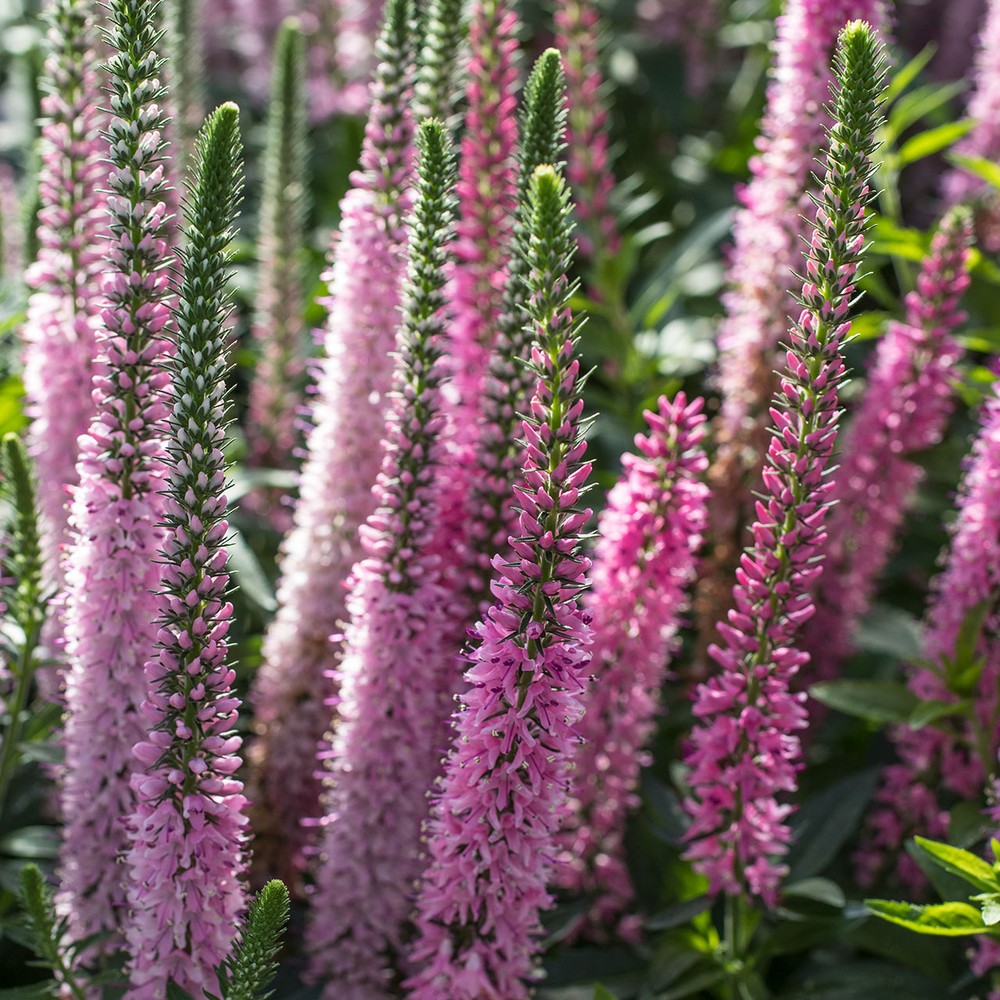Garden speedwell
(Veronica spicata spicata)

Description
Veronica spicata spicata, also known as spiked speedwell, is a perennial flowering plant that belongs to the family Plantaginaceae. It is native to Europe, western Asia, and northern Africa and is commonly found growing in meadows, pastures, and along roadsides. This plant has been cultivated in gardens for its attractive spikes of flowers and its ability to attract bees and butterflies. In this article, we will explore the botanical characteristics, cultivation, and uses of Veronica spicata spicata. Botanical Characteristics: Veronica spicata spicata is a clump-forming plant that grows up to 60cm tall and spreads up to 30cm wide. Its leaves are lance-shaped, narrow, and up to 8cm long. The plant produces upright spikes of flowers that are 10-20cm long, and each spike can have up to 50 individual flowers. The flowers have four petals and are usually blue-violet in color, but some varieties may have pink or white flowers. The flowers bloom from early to mid-summer and are highly attractive to bees and butterflies. Cultivation: Veronica spicata spicata is a hardy plant that grows well in a variety of soils, including sandy, loamy, and clay soils. It prefers well-drained soil and can tolerate dry conditions once established. This plant can be grown in full sun or partial shade, although it tends to flower more profusely in full sun. It is also tolerant of a wide range of temperatures and can grow in USDA hardiness zones 4-9. Propagation of Veronica spicata spicata can be done through division or from seed. Division is best done in the spring or fall, and seeds can be sown in the spring or fall as well. Seeds should be sown on the surface of the soil and covered lightly. Germination can take 2-4 weeks, and seedlings should be thinned out to allow for proper growth. Uses: Veronica spicata spicata is commonly grown in gardens for its attractive spikes of flowers and its ability to attract bees and butterflies. It is often used in rock gardens, borders, and cottage gardens. Its narrow leaves and upright spikes of flowers make it an excellent choice for vertical interest in the garden. In addition to its ornamental uses, Veronica spicata spicata has also been used in traditional medicine. The plant contains iridoid glycosides, which have anti-inflammatory and anti-bacterial properties. It has been used to treat a variety of ailments, including respiratory infections, skin conditions, and digestive issues. However, it should be noted that the plant can be toxic in large quantities and should only be used under the guidance of a trained healthcare professional. Conclusion: Veronica spicata spicata is a beautiful and versatile plant that can be grown in a variety of garden settings. Its attractive spikes of flowers and ability to attract pollinators make it a popular choice among gardeners. In addition to its ornamental uses, it has also been used in traditional medicine for its anti-inflammatory and anti-bacterial properties. Whether you are looking for a plant to add vertical interest to your garden or a natural remedy for common ailments, Veronica spicata spicata is an excellent choice.
Taxonomic tree:







